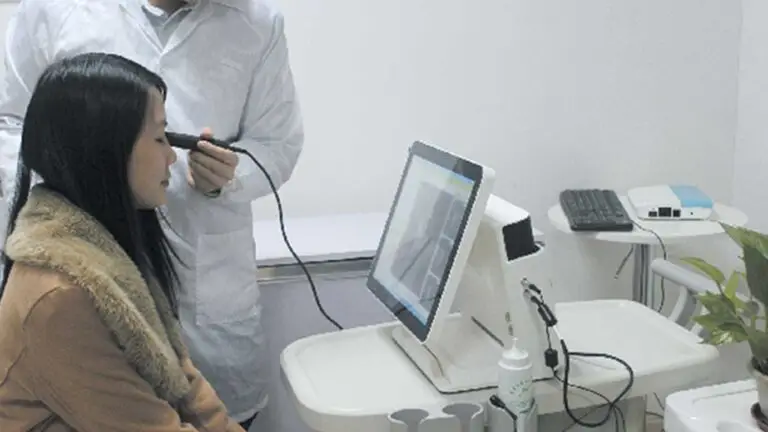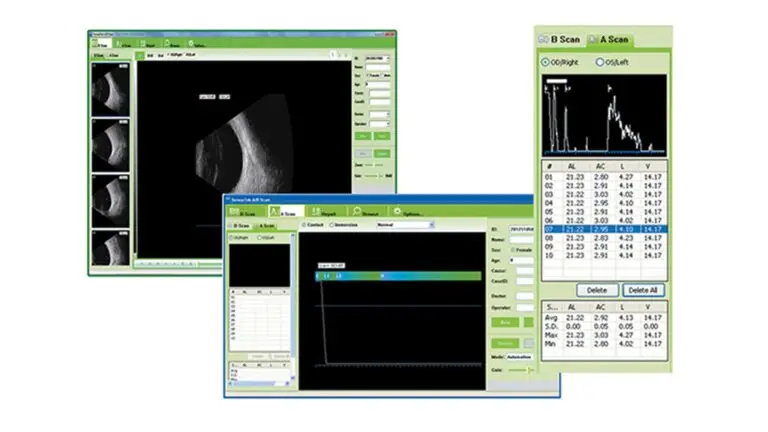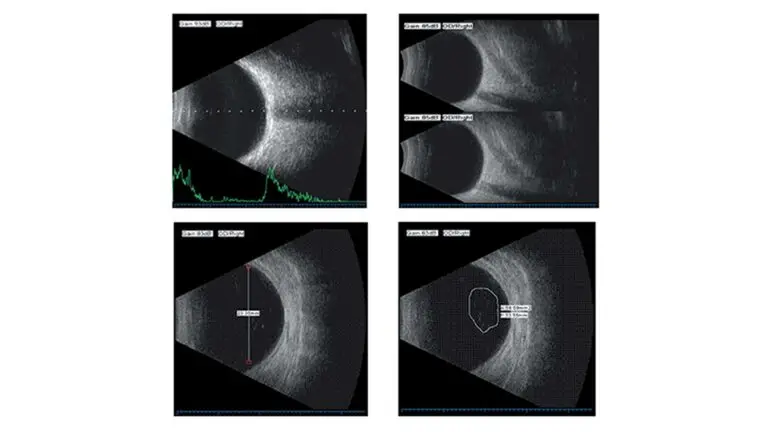
What is the Difference Between A-scan and B-scan in Ophthalmology?
- Posted
- Medically Reviewed by Mr Mfazo Hove Consultant Ophthalmologist
- Author: Chris Dunnington
- Published: July 30, 2025
- Last Updated: July 24, 2025
A Complete Guide from Blue Fin Vision® Eye Clinic
Precision eye care begins with the most reliable diagnostic tools. Understanding the difference between A-scan and B-scan in ophthalmology is essential for anyone embarking on a vision correction journey or seeking advanced ocular diagnostics. At Blue Fin Vision®, our clinics in London (Harley Street, Weymouth Street), Chelmsford, and Hatfield are trusted by patients seeking the best in expert-led, technology-driven eye health.
Introduction to Ultrasound Eye Tests
Ophthalmic ultrasound is a cornerstone of modern eye diagnostics, providing rapid, non-invasive insights into the delicate structures within your eye. Two primary modalities – A-scan for eyes and B-scan for eyes – play distinct yet complementary roles in comprehensive eye assessments.

What is the Difference Between A-scan and B-Scan in Ophthalmology?
Let’s examine the unique features, indications, and clinical value of these two essential tests.
A-scan for Eyes – Amplitude Modulation for Measurement
A-scan stands for amplitude scan. This technique uses one-dimensional ultrasound waves to measure distances within the eye with extraordinary precision. The results are displayed as a series of spikes representing tissue interfaces along the sound beam.
Main uses:
- Axial Length Measurement: Crucial for planning cataract or lens replacement surgery by determining the distance from the cornea to the retina.
- Anterior Chamber and Lens Thickness: Evaluates key dimensions to tailor treatment and surgical lens power.
- Implant Calculations: Helps calculate the exact dioptre strength needed for intraocular lens (IOL) implants.
- Application: Especially effective in cases of dense cataracts or high myopia, where optical technologies may fall short.
B-scan for Eyes – Brightness Imaging for Visualisation
B-scan refers to brightness scan ultrasound. Unlike the A-scan, the B-scan produces a two-dimensional, cross-sectional image of the eye and its surrounding structures. This real-time imaging is invaluable in cases where a direct view is obscured, or further detail is required.
Main uses:
- Imaging the Posterior Segment: Provides visualisation of the retina, vitreous, optic nerve, and the back of the eye, when corneal opacities, cataracts, or haemorrhages block other views.
- Detecting Pathology: Essential for diagnosing retinal detachments, vitreous haemorrhage, intraocular tumours, and foreign bodies.
- Guiding Surgical Planning and Monitoring: Assesses complex ocular cases both pre- and post-operatively.
- Application: Particularly useful for cases involving trauma, sudden vision loss, suspected intraocular tumours, or unexplained visual changes.

A-scan and B-Scan Differences: The Core Distinctions
Understanding A-scan and B-scan differences allows for targeted, effective care:
- Purpose:
- A-scan: Primarily for precise measurements (lengths and thicknesses) to guide refractive calculations.
- B-scan: For structural and anatomical visualisation, especially when standard examinations are restricted.
- Output:
- A-scan: One-dimensional graph with peaks and troughs denoting specific ocular surfaces.
- B-scan: Two-dimensional image, like a sonar map, revealing detailed anatomy and hidden pathology.
- Clinical Value:
- A-scan: Foundational for cataract and lens surgery.
- B-scan: Indispensable for diagnosing posterior segment disease, trauma, and tumours.
- Procedure Feel:
- Both are comfortable, non-invasive and quick, involving a gel and probe gently placed on the eyelid or eye surface.
The Role of Advanced Technology at Blue Fin Vision®
At Blue Fin Vision®, our eye clinic proudly uses state-of-the-art ophthalmic ultrasound technology. This innovative device offers both A-scan and B-scan functions, with enhancement settings to visualise everything from the anterior segment to deep retina. This flexibility ensures every eye assessment is both thorough and precise, placing our clinics among the best in London, Chelmsford, and Hatfield.
Key Equipment Benefits
- Normal and advanced imaging modes for enhanced clarity
- Ability to assess vitreous body, retina, and detect intraocular diseases
- critical for identifying infection, tumours, retinal detachments, and more
By combining these technologies, our top specialists and leading surgeons can select the exact test that best serves your individual needs, whether you’re planning for surgery or managing a complex ocular condition.
What to Expect During A-scan and B-scan Eye Diagnostics
Your experience with either scan at Blue Fin Vision® is gentle and straightforward:
- Preparation: Minimal to none. Usually, no anaesthetic required.
- Procedure: The eye or eyelid is cleaned. A safe, water-based gel is applied. A small probe is gently placed, sending sound waves into the eye.
- Duration: Both scans are completed in just a few minutes per eye.
- Aftercare: No recovery time needed. Immediate return to daily activities.

Why Choose Blue Fin Vision® for Eye Assessments?
Your vision is too important to trust to anyone but the best. Blue Fin Vision® Eye Clinic unites:
- Expertise of top doctors, top specialists, and leading surgeons
- The most advanced, hospital-grade diagnostic technology
- Clear communication and continued support at every step
- Personalised, technically precise care in London (Harley Street, Weymouth Street), Chelmsford, and Hatfield
Book a Comprehensive Eye Test with Blue Fin Vision®
Understanding the difference between A-scan and B-scan in ophthalmology empowers you to make more informed decisions about your eye health. When you choose Blue Fin Vision®, you are placing your trust in a clinic committed to accuracy, safety, and the best possible outcomes.
Book your eye assessment today at our Harley Street and Weymouth Street clinics in London, or at our Essex (Chelmsford) and Hertfordshire (Hatfield) centres. Trust in a team whose expertise and advanced diagnostics set the standard for British eye care. Your vision deserves nothing less than exceptional.


